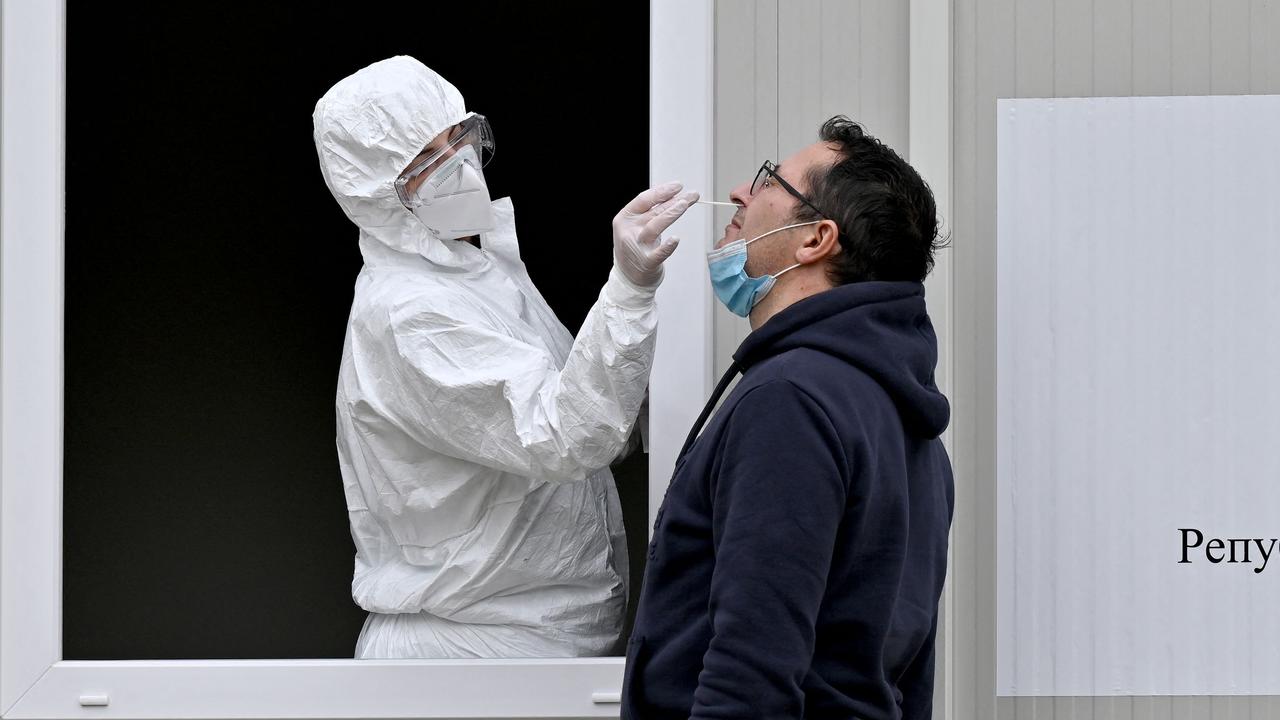Repatriation flight from India lands in Melbourne hours before snap lockdown
A repatriation flight from India has touched down in Melbourne just hours before Victoria is plunged into lockdown.
Coronavirus
Don't miss out on the headlines from Coronavirus. Followed categories will be added to My News.
A repatriation flight from India has landed in Melbourne hours before the state is plunged into a seven-day lockdown.
About 150 people on Qantas flight QF112 arrived in the Covid-19 stricken city just before 5pm on Thursday after travelling from New Delhi via Darwin.
All passengers who boarded the plane returned negative tests for COVID-19 and will begin their two weeks of isolation in hotel quarantine.
Victoria’s acting Premier James Merlino announced the snap week-long lockdown on Thursday after the state recorded 11 new locally acquired cases.

This will be the state’s fourth lockdown in 12 months.
As health authorities race to contain the Whittlesea cluster, stage-three restrictions will be imposed from 11.59pm.
There are only five reasons a Victorian can leave their home including:
- Shopping for necessary goods and services
- Authorised work or permitted education
- Exercise – a 2-hour limit with one other person
- Care giving, compassionate, and medical reasons
- To get vaccinated
Mr Merlino said the “circuit breaker” was a reminder for people eligible to get the Covid-19 vaccine to do so.
“The reason why we are dealing with this outbreak today is because of a hotel breach in South Australia, that is not a criticism, it is just a fact,” he said.
“The only way through this pandemic is everyone getting vaccinated as quickly as you are eligible.”
‘DOUBLE TROUBLE’ FOR INDIA
Two people were killed Wednesday in the latest cyclone to hit India, authorities announced.
“One was carried away by the surge from the sea … and another died after his house collapsed in East Midnapore district,” said Mamata Banerjee, chief minister of the eastern state of West Bengal.
Cyclone Yaas grew in the Bay of Bengal as rescuers on the opposite side of the country kept up the search for bodies from Cyclone Tauktae, which claimed at least 155 lives on May 14.
Yaas turned into a “very severe” storm late Tuesday and the Indian Meteorological
Amid fears that the cyclone could help spread the deadly coronavirus wave that has hit India in recent weeks, heavy rainfall lashed coastal villages and towns in the hours ahead of the arrival of Yaas.
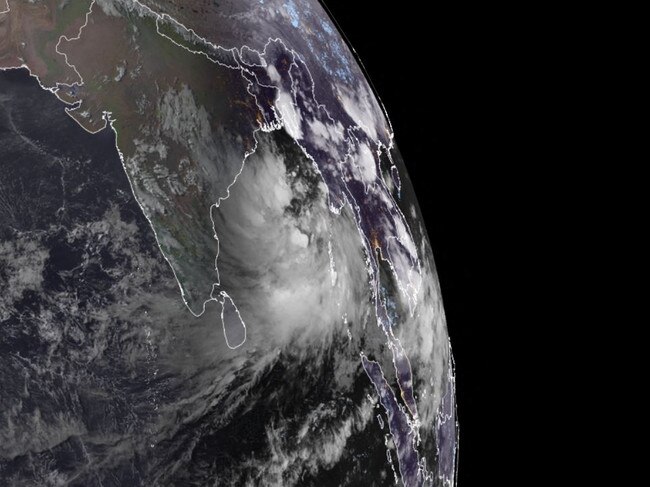
A tornado that preceded the storm left two dead by electrocution as it tore through West Bengal’s Hooghly district, authorities said.
Kolkata, West Bengal’s main city, ordered its international airport to shut down for most of Wednesday because of the looming storm.
More than 1.2 million people moved to shelters in West Bengal and Odisha, which are hit by cyclones virtually every year.
“Every life is precious,” said Odisha’s chief minister Naveen Patnaik earlier as he appealed for the population not to “panic” and to move away from the coast.
A record 4800 disaster workers positioned in the two states.
Both states are struggling with the coronavirus wave that has left more than 120,000 dead across India in the past six weeks.
While masks have been distributed in emergency shelters and relief workers are trying to impose social distancing, many officials fear the new cyclone will only speed up the spread of the virus.
“This cyclone spells double trouble for millions of people in India as there is no respite from COVID-19,” said Udaya Regmi, South Asia head of the International Federation of Red Cross and Red Crescent Societies.
The storm “is a terrible blow for many people in coastal districts whose families have been struck down by Covid-19 infections and deaths,” West Bengal state minister Bankim Chandra Hazra told AFP.
Hazra added that it would be “a big challenge” to maintain social distancing in the emergency shelters.
Some vaccination centres in threatened districts as well as Kolkata suspended operations because of the storm and a special operation had been launched to ensure the supply of oxygen and medicines to hospitals, officials said.
INDIA SURPASSES 300,000 DEATHS
India passed 300,000 confirmed coronavirus deaths on Monday, with fatalities remaining high despite the country flattening out the number of new cases in its devastating pandemic wave.
For several weeks the country of 1.3 billion has been hitting record daily rises in infections and fatalities that have overwhelmed its healthcare system.
While the crisis has eased in major cities such as New Delhi and Mumbai, the coronavirus is still spreading in rural areas and southern states.
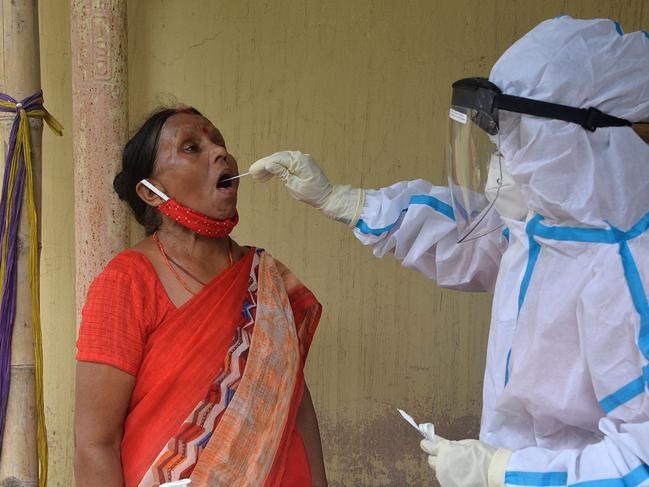
“Deaths always will lag cases … People who have been diagnosed with infection now will go into hospital, and then a small number of them will die but that will be later,” Ashoka University biology professor Gautam Menon told reporters.
India is now the third country after the United States and Brazil to cross 300,000 deaths.
On Monday it reported 4,454 deaths in 24 hours — the second-highest daily figure so far — to take the total toll to 303,720, according to health ministry data.
It added the last 50,000 deaths in under two weeks.
But experts said the real numbers of deaths and infections, now at just over 26.7 million, were probably much higher than the official figures.

‘BLACK FUNGUS’ FEARS
The brutal wave has been accompanied by the emergence among coronavirus patients of thousands of cases of the usually rare infection mucormycosis, or “black fungus”.
The government has given figures between 5,424 and 8,848 for the number across India. It usually records fewer than 20 cases a year.
Doctors say one of the reasons behind the explosion in “black fungus” infections has been excessive use of steroids on virus patients.
Health Minister Harsh Vardhan said imports of the main antifungal drug, amphotericin B, had started to arrive in the country amid a severe shortage.
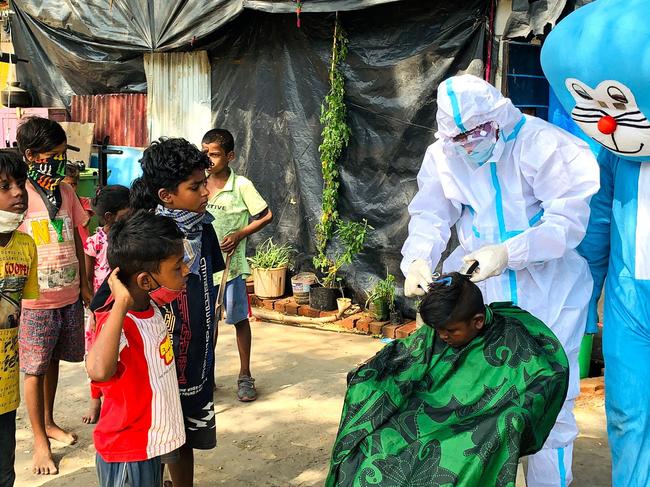
The coronavirus wave has brought India’s hospital system to its knees with severe shortages of oxygen and critical drugs.
The government has been criticised for its response as long queues formed for funerals at crematoriums and cemeteries.
Images of suspected Covid-19 dead floating in the holy Ganges river or buried in shallow graves have only added to the controversy.
Experts have warned that religious festivals and packed state election rallies held earlier in the year could have led to virus “superspreader” events.
There were also concerns that the B. 1.617 variant, first detected in India last year, has contributed to the surge.
Vardhan said the variant accounted for some 20 per cent of just under 26,000 samples from positive Covid-19 tests that have been genetically sequenced.

As part of its efforts to combat the pandemic, India has administered just over 196 million Covid-19 vaccination shots since mid-January.
But experts say the mass inoculation program needs to be significantly stepped up.
The country, home to the world’s largest vaccine maker, has halted exports of jabs to meet local demand.
In neighbouring Sri Lanka, where authorities are also battling a spike in infections and deaths, the government extended a week-long lockdown until June 7.
INDIA ‘STRUGGLING TO COPE’ WITH PILE-UP OF DEAD BODIES
It comes as India is struggling to cope with the pileup of dead bodies, with funeral services overwhelmed and crematoriums pushed to the point of breaking from overuse.
Do-it-yourself burials and cremations are rife, as is corruption and skyrocketing prices for increasingly scarce resources. And the death toll shows no sign of dropping.
After dealing with two coronavirus funerals in two weeks, Raj Sharma was too grief-stricken to negotiate a third with profiteering hearse drivers and crematoriums, so he turned to one of the many new businesses that have sprung up around India helping struggling people while also turning a tidy profit.
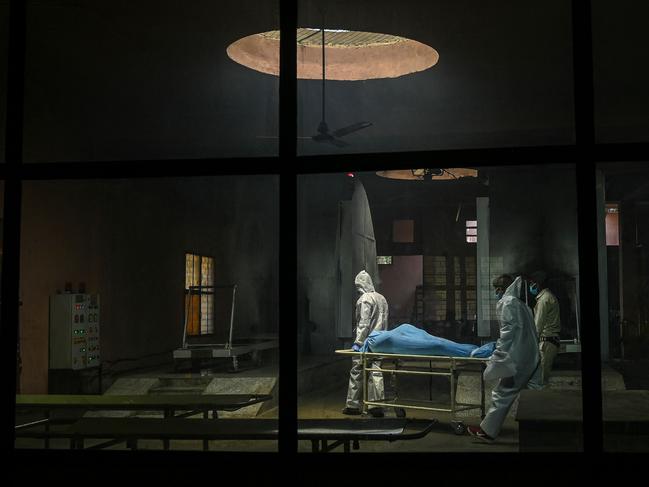
Sharma was reeling from the loss of a third friend when he heard of Anthyesti Funeral Services, which provides “end-to-end” coronavirus funerals in four cities.
“They pick up the body from the hospital and take care of everything,” the 48-year-old New Delhi professor told reporters.
Anthyesti’s Covid package cost about 30,000 rupees ($A515) — a bargain compared with the prices charged by hearse services that can be up to five times higher.
It brought him “mental peace that is worth any price”.

The company is one example of how entrepreneurs are discovering opportunities as India grapples with a worsening coronavirus crisis.
Anthyesti — which means “last sacrifice” in Sanskrit — was founded in 2016 by former software engineer Shruthi Reddy Sethi, who wanted to clean up India’s unregulated funeral industry.

But the 36-year-old never anticipated the dystopian impact of COVID-19, with shortages of space in morgues, ambulances and even wood for funeral pyres.
In many cases, relatives have had to wait days to bury or cremate their loved ones.
“Where do these families go? They’re just laying the bodies in a line at the cremation grounds, waiting for their turn to come,” Sethi said.
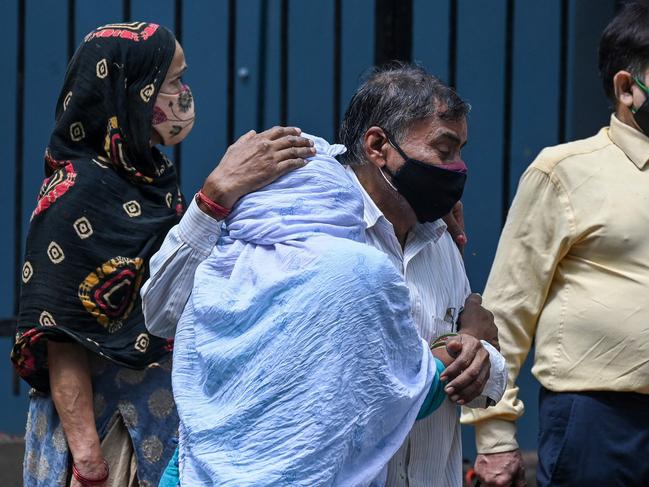
“The biggest benefit that we are offering is that our team is actually doing the waiting on the client’s behalf.”
Sethi provides medical insurance for the cremation workers, undertakers, embalmers and ambulance drivers that Anthyesti relies on — a rarity in an industry notorious for exploiting poorly-paid labour.
The firm’s revenues increased 20 per cent last year and she expects turnover to double in 2021.
Others have set up entirely new ventures. Aditya Gupta realised that Bollywood’s film industry was unprepared for the pandemic fallout.
“On Indian film sets, no one’s looking into health and safety like they should,” he said.
He set up Life First Sanitisation last July, and has since worked with Netflix, Amazon Prime Video, Disney+ Hotstar and leading Bollywood production houses.
The company carries out COVID-19 tests for cast and crew, sanitises spaces and equipment with ultraviolet-C light, and enforces social distancing.
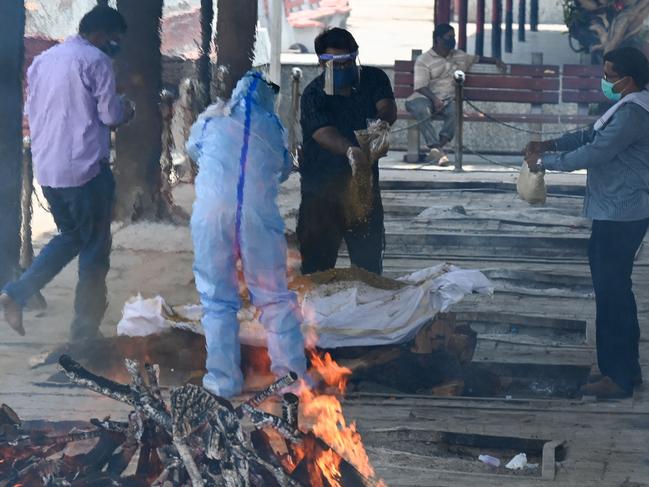
MORE YOUNG INDIAN ADULTS DYING FROM COVID-19
Covid is increasingly killing young adults who have no underlying conditions as India is wracked by a deadly second wave of infections.
“We’re seeing a higher number of young adults in this wave — 60 to 70 per cent are younger than 60, of whom more than half are below 45,” said Reshma Tewari, director of critical care at Artemis hospital in the northern city of Gurgaon, in an interview with the Times of India. “Of those in ICU, deterioration is often rapid with many requiring ventilator support and aggressive treatment.”
Statistics recently released by Tamil Nadu, a southern state, show that an increasing amount of people under 40 without any underlying conditions are dying of Covid, the newspaper reported.
More than 26 million people have been infected with the coronavirus in India, and more than 295,500 have died, according to statistics compiled by Johns Hopkins University which has been tracking infections around the world.
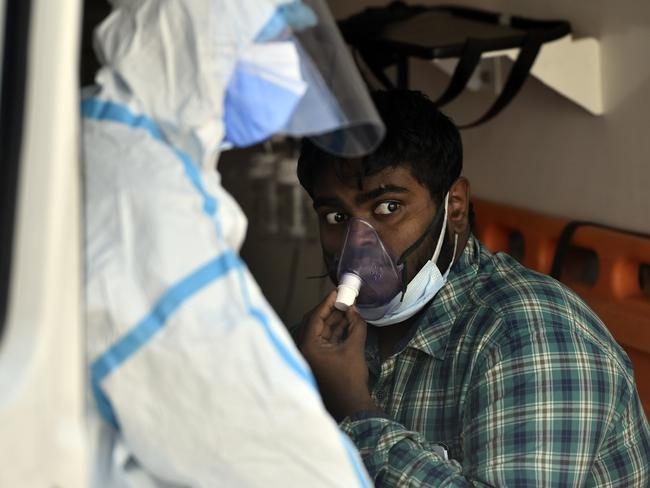
AUSSIES FROM INDIA QUARANTINED IN DARWIN
A second repatriation flight from India landed in Darwin, with none of the 165 Australians prevented from boarding this time.
The Qantas flight arrived at the RAAF base on Sunday morning, with the passengers transported to the Howard Springs quarantine facility where they will remain for two weeks.

The Department of Foreign Affairs and Trade said there were more flights to come, following an end to the federal government’s controversial India travel ban.
“New South Wales, Victoria, Queensland, South Australia and Western Australia have indicated they will assist by receiving passengers from India,” DFAT said.
“This support from the states will significantly increase the number of facilitated commercial flights, with a total of eight flights scheduled by June 4.”
West Australian Premier Mark McGowan said he was still waiting for specifics about the flight to his state.
“I wrote to the Prime Minister to say that we were prepared to take a flight but it would have to be within our cap,” he said.
“We have a range of hotels — five or six hotels — (and) we’ll work to ensure that when a flight comes in, we’re able to accommodate that. The details obviously need to be worked out.
“Making sure that we bring people home within our cap … is what we’re about and that’s what we’ll work with the Commonwealth to achieve.”
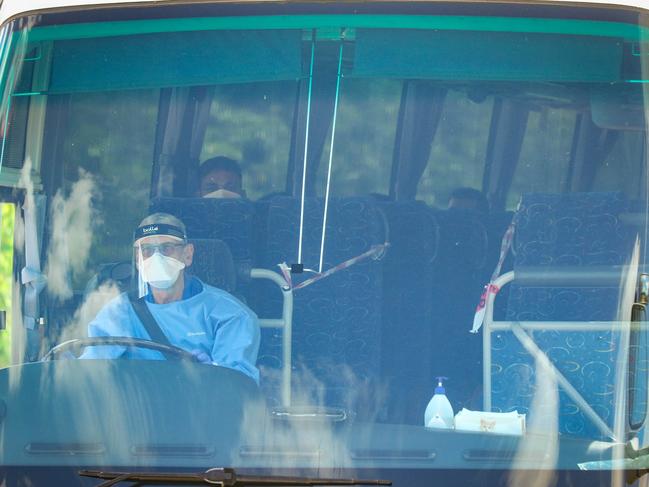
The first flight last Saturday was forced to take off half empty after about 70 passengers either tested positive to Covid or were deemed close contacts.
But the accuracy of Qantas’ screening process was called into doubt after some people later returned negative results.
The temporary ban on travel from India was introduced when the country began struggling with a deadly wave of coronavirus, with the aim of sparing Australia’s quarantine system from being overwhelmed.
There are still more than 11,000 Australians stranded in India who want to come home.
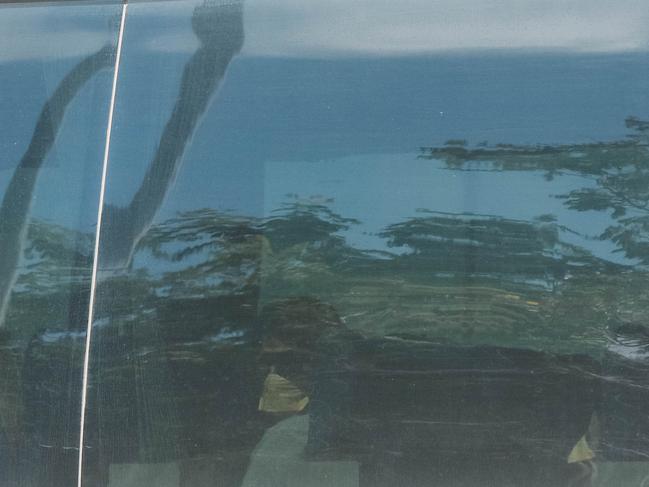
STOP USING ‘INDIAN VARIANT’ ON SOCIAL MEDIA
India’s government has ordered social media platforms to take down content that refers to the “Indian variant” of the coronavirus.
The B. 1.617 variant was first detected in India last year and has been blamed for much of a devastating Covid wave that has battered South Asian nations in recent weeks.
It has spread to Britain and at least 43 other countries, where “Indian variant” has become a widely used term.

The government order, sent on Friday local time by the electronics and information technology ministry, highlighted government sensitivity to accusations that it has mishandled the new surge.
In it, the ministry told social media companies to “remove all the content” that refers to the “Indian variant”.
“It has come to our knowledge that a false statement is being circulated online which implies that an ‘Indian variant’ of coronavirus is spreading across the countries. This is completely FALSE,” read the letter.
The ministry cited previous calls to curb “false news and misinformation” about the pandemic on social media as a basis for the order.

It argued that the World Health Organisation did not link any country to the B. 1.617 variant.
The WHO declared the strain a “global concern” last week as it spread around the world.
Several countries have banned or put severe restrictions on passengers from India since the variant emerged.
India’s right-wing government has been criticised for its efforts to contain the new pandemic wave. India has faced severe shortages of oxygen, vaccines, hospital beds and lifesaving drugs.
The government last month ordered Twitter and Facebook to remove dozens of posts critical of Prime Minister Narendra Modi’s handling of the crisis.
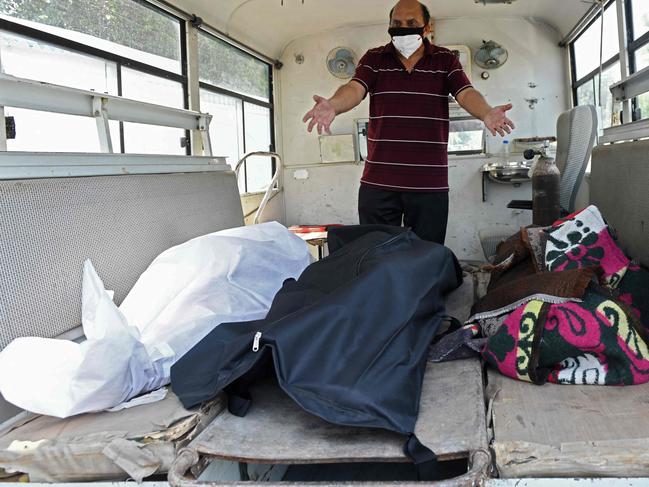
India on Saturday, local time, reported another 257,000 cases and 4,194 deaths in 24 hours, taking its total to 26.2 million infections and 295,525 deaths.
Almost half of the deaths have been recorded since late March when the new surge started battering the nation of 1.3 billion people.
The capital, New Delhi, meanwhile stopped vaccine shots for people aged under 45 because it has run out of jabs.
- with AFP
Originally published as Repatriation flight from India lands in Melbourne hours before snap lockdown



